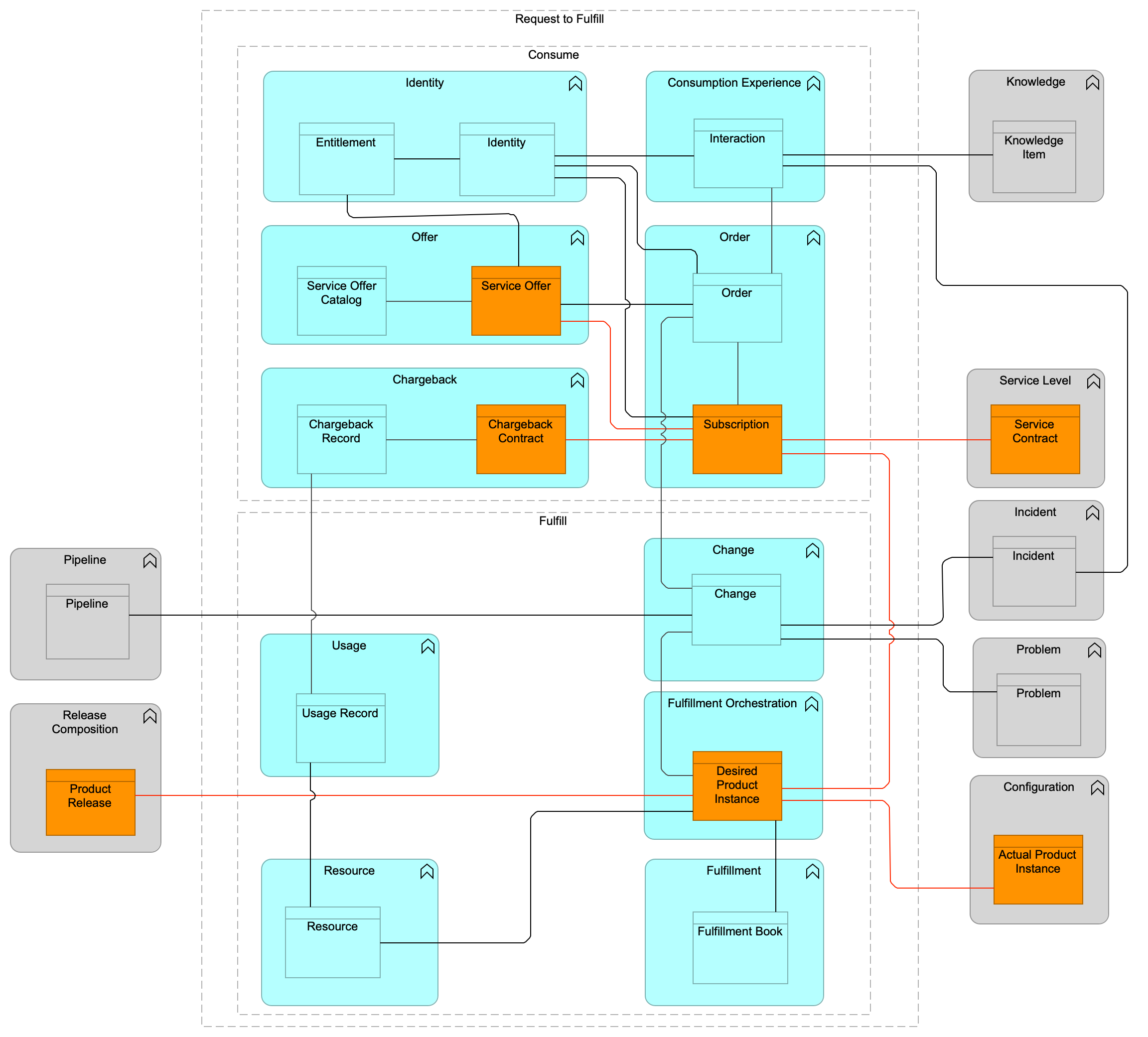Request to Fulfill Functions

Description
The Request to Fulfill functions, informally referred to as "Deliver", represent a modern, consumption-driven engagement model that goes beyond the traditional service request management. It is a framework for connecting various consumers (business users, technology practitioners, or end customers) with the goods and services that they need to drive productivity and innovation. It fosters service consumption and fulfillment, service costing, knowledge sharing, self-service support, and collaboration between communities of interest to improve the overall engagement experience with IT. Many organizations use multiple technology services and/or service catalogs to address the needs of their consumers.
The Request to Fulfill functions bring these different catalogs and consumer personas into a single consumption experience, thereby eliminating complexity and confusion for consumers in browsing through multiple service catalogs to choose what services they need.
The Request to Fulfill functions contain the following functional components:
-
Consume functionality:
-
Consumption Experience component
-
Identity Management component
-
Offer Management component
-
Order component
-
Chargeback component
-
-
Fulfill functionality:
-
Change component
-
Fulfillment Orchestration component
-
Resource component
-
Fulfillment component
-
Usage component
-
One of the main objectives of the Request to Fulfill functions is to drive the system of engagement by facilitating a unified engagement framework between consumers and the other related IT4IT Functional Components. Below are some of the system of engagement goals:
-
Drive the consumption through the unified aggregated catalog
-
Enable collaboration between communities of interest
-
Obtain support through a self-service interface
-
Access knowledge that enables them to be better informed about services offered by IT
Related Value Streams
The following value streams use one or more functional components from the Request to Fulfill functions:
-
Release
-
Consume
-
Deploy
Business Benefits
The Request to Fulfill functions place emphasis on time-to-value, repeatability, and consistency for consumers looking to request and obtain services from IT. It optimizes both service consumption and fulfillment experiences by delineating between the creation of offers and catalog aggregation. The Request to Fulfill functions enable the aggregation of catalogs and Service Offers from multiple service providers into a single consumption experience. Therefore, while there is complexity on the delivery side in managing the various catalogs and Service Offers, it is not exposed to the consumer and the ordering experience is seamless and inviting. This also enables effective chargeback and service costing mechanisms, an important requirement in a multi-sourcing environment.
The main benefits of using the Request to Fulfill functions are:
-
Provides a blueprint for increasing business innovation velocity by facilitating a service Consumption Experience that allows consumers to easily find and subscribe to goods and services through a self-service engagement model
-
Provides a functional framework that delineates between a single Service Offer Catalog and Identity Management and Consumption Experience functional component to reduce complexity in the consumer experience
-
Provides an architectural foundation for moving from traditional request management to service brokerage that increases both business and effectiveness
-
Increased fulfillment efficiency and consistency through standard change deployment and automation
-
Provides holistic visibility and traceability across the service subscription, usage, and chargeback to improve Financial Management
-
Enables increased cost optimization; for example, by canceling expired Subscriptions and reclaiming resources, Subscriptions, and/or licenses that are unused